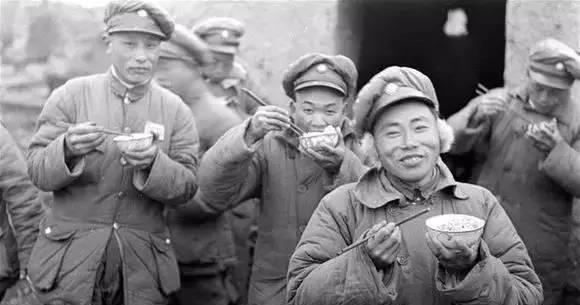Influenced by many film and television dramas now, many people believe that during the War of Resistance Against Japanese Aggression, the Chinese army, whether it was the Nationalist Army or the Eighth Route Army, was very full of spirit, although the battle was difficult, at least it would not worry about food. After all, playing the soldiers of that time with modern people will always give people the illusion of sufficient military food and full stomachs, thinking that the Chinese army at that time was only inferior to people in weapons and equipment, but if you see what the anti-Japanese army really ate at that time, you can understand why the combat effectiveness of the Chinese army is so low, and you know how ridiculous the TV series is.

Before the outbreak of the War of Resistance Against Japanese Aggression, the treatment of the Nationalist army as a Chinese government army was still good, and the daily supply standard of each soldier was relatively high, with 1.5 kilograms of rice or miscellaneous grains, half a kilogram of pickles and dried vegetables, and a sufficient amount of soy sauce, salt, etc. Some troops would also get eggs and canned food, but with the outbreak of war, most of the grain-producing areas in the country fell, and by the middle and late stages of the War of Resistance, only the southwest and northwest provinces could still supply the army.
At this time, the food supply situation of the Nationalist army fell in a downward fashion, taking the troops stationed in Tongguan in 1943 as an example, each soldier only had 6-9 grains per day, as well as a small amount of pickles, etc., and many troops were starving. Of course, this is still the usual state, if it is in battle, it is more difficult, and the soldiers can hardly get replenishment from the rear after eating some of the dry food they have brought with them.
At that time, even a trace of white smoke on the battlefield could be discovered by the Japanese army and then hit by artillery fire. Compared with the Nationalist army, which at least received government supplies, the situation of the Eighth Route Army and other units behind enemy lines was even more difficult, and many soldiers could only eat one meal a day. It can be seen that it is completely different from the film and television drama, so don't be deceived again.
To a large extent, during the War of Resistance Against Japanese Aggression, the combat effectiveness of the Chinese army was greatly reduced by the poor supply situation, and it was naturally not an opponent in the face of a well-equipped and well-supplied Japanese army, and it should be known that the Japanese soldiers at that time had additional canned meat or canned fish in addition to 700 grams of rice or biscuits per day. Every week, you can also get candy, chocolate and other domestic donated materials, even if the Japanese army on the Chinese battlefield in the later period lost the unified supply of the base camp, you can also rely on the materials in the occupied area to eat and drink, compared with the Chinese army in the same period, the treatment is not too good.
So it is not easy for China to survive eight years under such difficult circumstances, and of course not all Chinese soldiers are hungry. Although the National Government was difficult, there were three types of people who fully guaranteed the supply, namely, the Whampoa student soldiers in the rear and the pilots of the Air Force, who still had sufficient monthly military food supplies, and who could receive additional replenishment every month.
Then there was the Chinese Expeditionary Force in Burma, but they were more supplied by the US army, each person could eat meat and fresh vegetables every day, and this well-supplied force later showed a very strong combat ability on the Burmese battlefield.